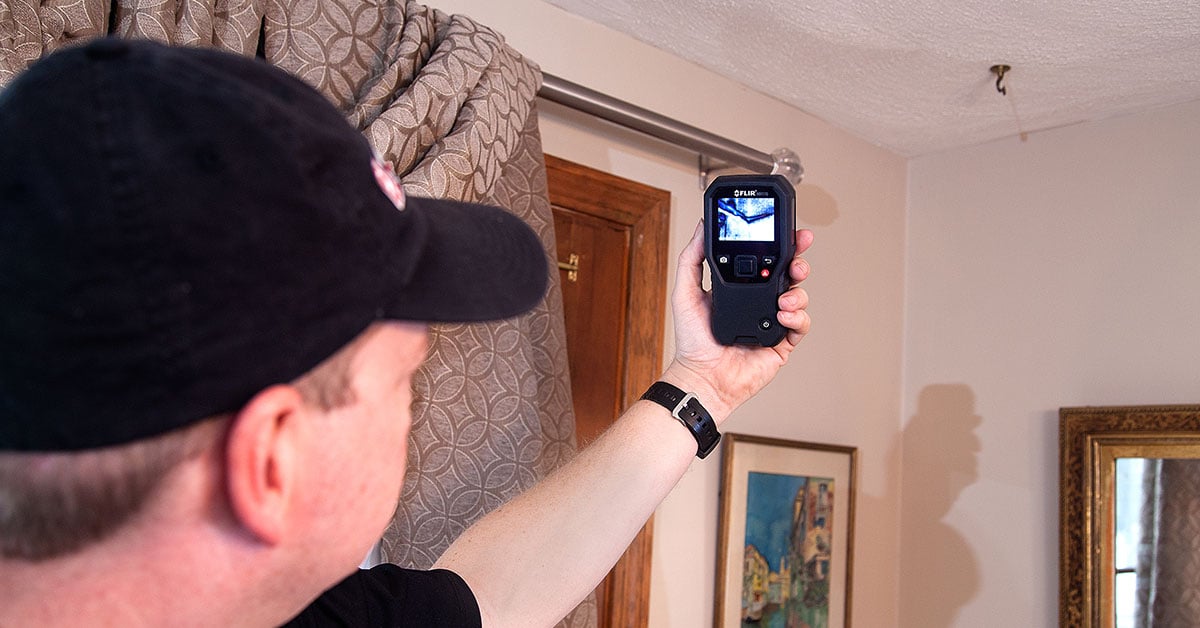Guide To Water Leak Discovery In The House
Guide To Water Leak Discovery In The House
Blog Article
What're your ideas concerning Hacks to detect leaks?

Early detection of leaking water lines can mitigate a potential calamity. In addition to conserving you cash, it will reduce the worry as well as irritation. The moment you find a leakage, calling your plumber for repair services is the best service. Nevertheless, some tiny water leaks might not be visible. If you can not find it with your nude eyes, here are some hacks that help.
1. Take A Look At the Water Meter
Every home has a water meter. Checking it is a proven manner in which aids you find leaks. For beginners, shut off all the water resources. Make sure no person will flush, use the tap, shower, run the washing machine or dish washer. From there, most likely to the meter as well as watch if it will alter. Considering that nobody is utilizing it, there must be no movements. That suggests a fast-moving leakage if it relocates. Also, if you detect no changes, wait an hour or more and inspect back once more. This suggests you might have a slow leakage that can also be underground.
2. Check Water Consumption
Assess your water expenses and track your water intake. As the one paying it, you must discover if there are any discrepancies. If you identify sudden changes, in spite of your consumption coinciding, it indicates that you have leaks in your plumbing system. Bear in mind, your water expense should fall under the exact same range monthly. A sudden spike in your costs indicates a fast-moving leakage.
A steady boost every month, also with the same behaviors, shows you have a sluggish leak that's also slowly escalating. Call a plumber to thoroughly check your residential property, specifically if you really feel a cozy location on your floor with piping beneath.
3. Do a Food Coloring Test
When it comes to water intake, 30% comes from bathrooms. If the shade in some way infiltrates your dish during that time without flushing, there's a leak in between the storage tank and dish.
4. Asses Outside Lines
Don't forget to examine your outside water lines too. Examination spigots by affixing a yard hose pipe. Should water permeate out of the connection, you have a loose rubber gasket. Change this and also guarantee all connections are limited. If you've got a sprinkler system, it will assist get it expertly examined and also preserved every year. One tiny leak can throw away lots of water as well as surge your water costs.
5. Examine and Examine the Scenario
Homeowners should make it a behavior to inspect under the sink counters and also even inside closets for any type of bad odor or mold development. These two red flags show a leak so prompt interest is needed. Doing routine examinations, also bi-annually, can conserve you from a major issue.
A lot more notably, if you know your house is already old, keep a watchful eye on your heating systems, pipes, pipes and so on. Check for stainings as well as weakening as a lot of appliances and pipes have a life span. They will certainly also normally deteriorate because of tear and wear. Do not wait for it to rise if you presume dripping water lines in your plumbing system. Call an expert plumber immediately so you do not wind up with a terrible mess in your house.
Early detection of dripping water lines can reduce a possible disaster. Some little water leaks may not be visible. Examining it is a surefire method that helps you discover leakages. One small leakage can squander lots of water and spike your water bill.
If you suspect dripping water lines in your plumbing system, don't wait for it to escalate.
WARNING SIGNS OF WATER LEAKAGE BEHIND THE WALL
PERSISTENT MUSTY ODORS
As water slowly drips from a leaky pipe inside the wall, flooring and sheetrock stay damp and develop an odor similar to wet cardboard. It generates a musty smell that can help you find hidden leaks.
MOLD IN UNUSUAL AREAS
Mold usually grows in wet areas like kitchens, baths and laundry rooms. If you spot the stuff on walls or baseboards in other rooms of the house, it’s a good indicator of undetected water leaks.
STAINS THAT GROW
When mold thrives around a leaky pipe, it sometimes takes hold on the inside surface of the affected wall. A growing stain on otherwise clean sheetrock is often your sign of a hidden plumbing problem.
PEELING OR BUBBLING WALLPAPER / PAINT
This clue is easy to miss in rooms that don’t get much use. When you see wallpaper separating along seams or paint bubbling or flaking off the wall, blame sheetrock that stays wet because of an undetected leak.
BUCKLED CEILINGS AND STAINED FLOORS
If ceilings or floors in bathrooms, kitchens or laundry areas develop structural problems, don’t rule out constant damp inside the walls. Wet sheetrock can affect adjacent framing, flooring and ceilings.
https://www.servicemasterbyzaba.com/blog/how-to-detect-water-leakage-in-walls/

As a serious person who reads about Detecting hidden plumbing leaks, I figured sharing that article was smart. Sharing is caring. You never know, you will be helping someone out. Thank you for your time. Please check up our site back soon.
Report this page